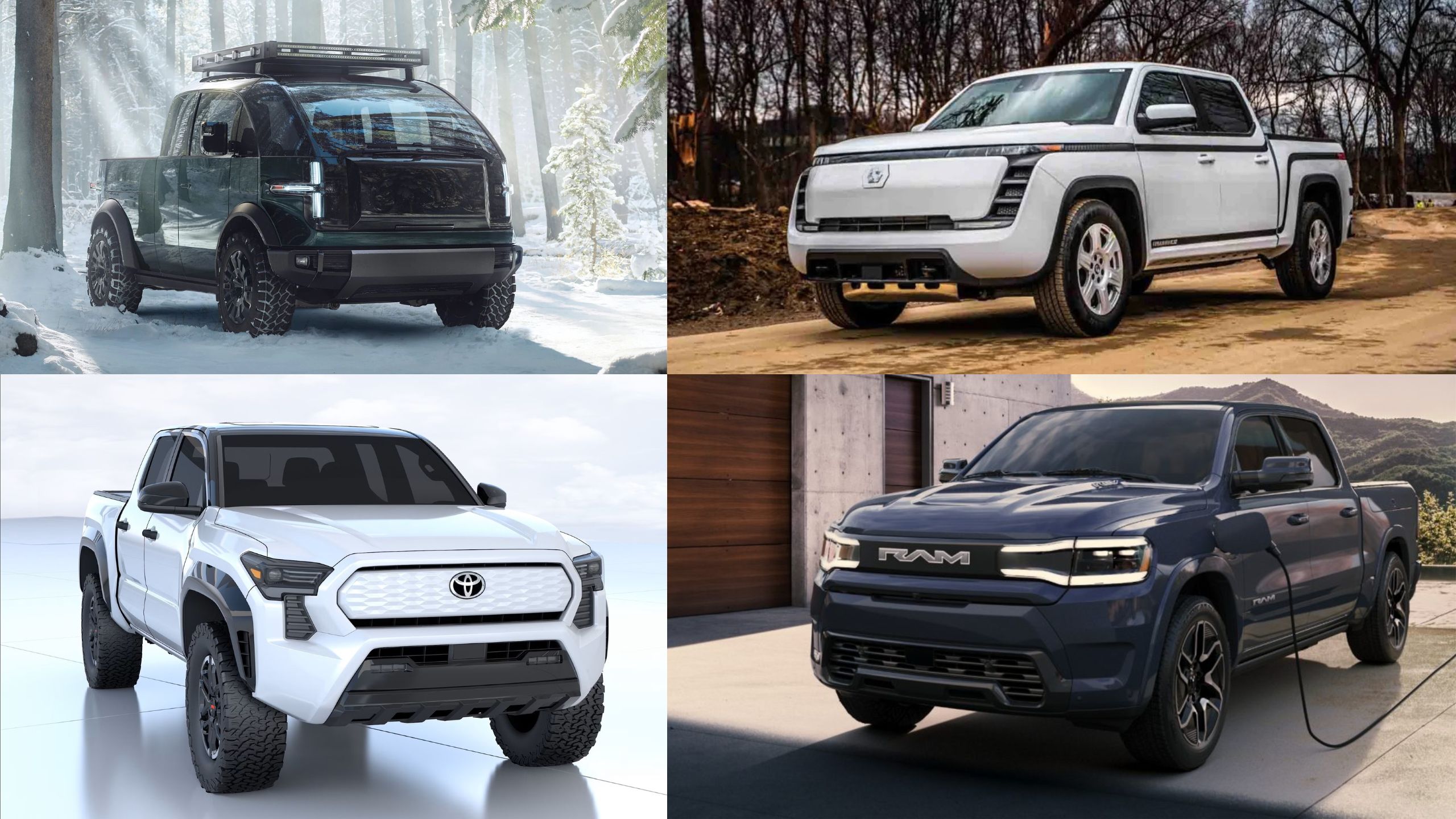The electric vehicle revolution is finally reaching the pickup truck segment, traditionally dominated by gas-guzzling behemoths. As battery technology advances and charging infrastructure expands, manufacturers are racing to electrify America’s favorite vehicle type.
These upcoming electric trucks promise to combine the utility and capability truck owners demand with zero-emission drivetrains, instant torque, and innovative features impossible in conventional vehicles.
From established automakers to ambitious startups, the competition is fierce to capture market share in this lucrative segment.
The trucks highlighted below represent diverse approaches to electrification some prioritize work capability, others adventure readiness, while some focus on breakthrough technology.
What unites them is the potential to dramatically shift consumer perceptions about electric vehicles by demonstrating that battery power can enhance, rather than compromise, the truck experience.
As these models hit the market over the next several years, they’ll offer compelling alternatives to traditional pickups while pushing the entire industry toward a more sustainable future.
1. Tesla Cybertruck
The Tesla Cybertruck continues to generate unprecedented buzz with its radical, angular stainless steel exoskeleton design that challenges every pickup truck convention.
While initial deliveries began in late 2023, widespread availability of all variants is still forthcoming, and its impact on the market remains a developing story.
Tesla’s approach represents the company’s philosophy of reimagining vehicle categories from first principles rather than simply electrifying existing designs.
The Cybertruck’s performance specifications are equally unconventional. The tri-motor “Cyberbeast” variant delivers a staggering 845 horsepower, rocketing from 0-60 mph in just 2.6 seconds in supercar territory.
Tesla claims a range of up to 340 miles, though real-world testing suggests somewhat lower figures, particularly when towing. The truck’s 11,000-pound towing capacity and 2,500-pound payload capacity position it competitively in the segment.
Where the Cybertruck truly innovates is its structural engineering. The unpainted 30X cold-rolled stainless steel exoskeleton eliminates the need for a traditional body-on-frame design, creating exceptional rigidity while reducing weight.
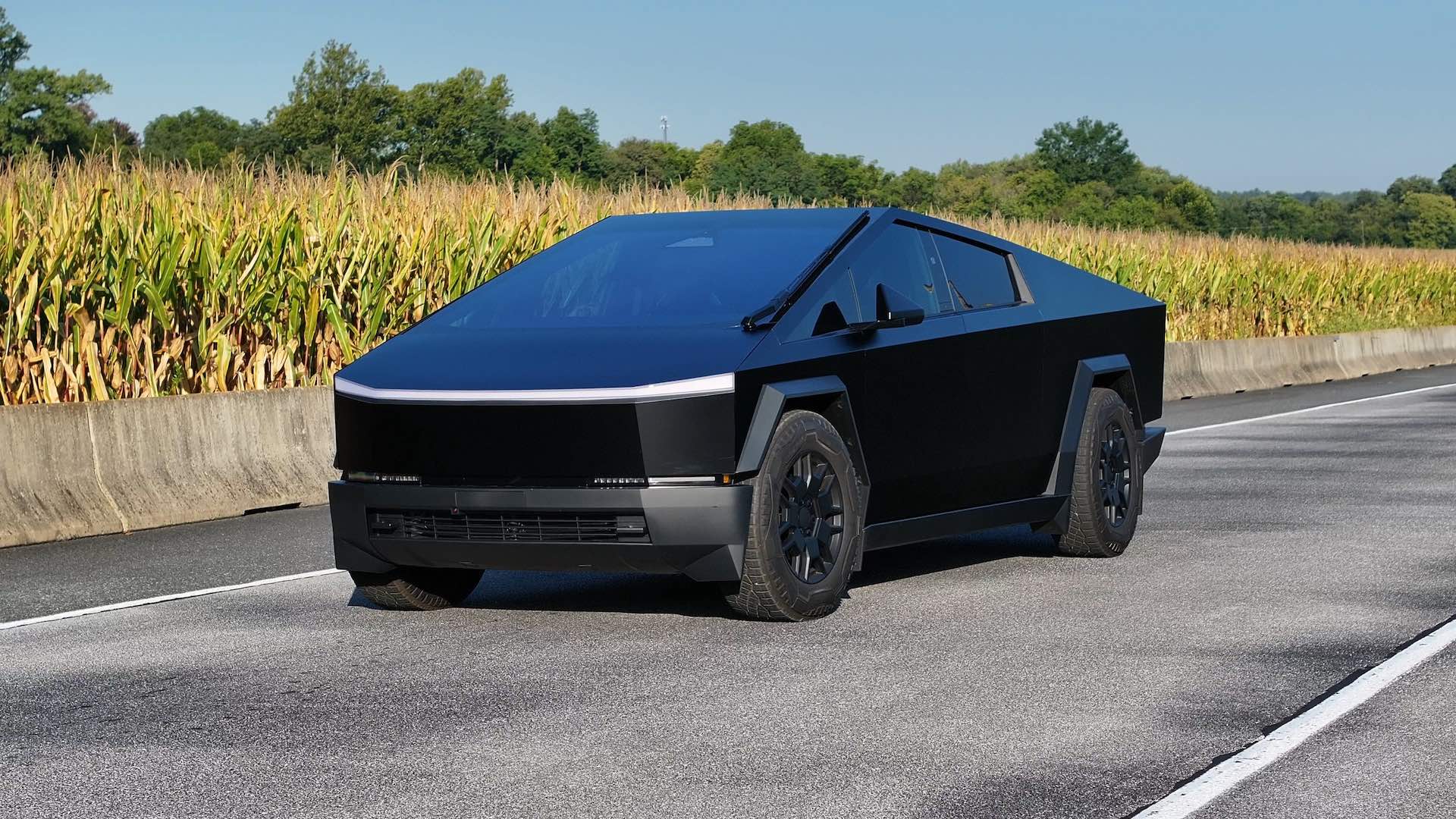
The controversial design isn’t merely aesthetic it fundamentally changes how trucks are built. Additional innovations include Tesla’s 48-volt electrical architecture, the steer-by-wire system with variable ratio, and adaptive air suspension providing up to 16 inches of ground clearance.
The interior maintains Tesla’s minimalist approach with an 18.5-inch central display and a smaller screen for rear passengers. The vault (bed) includes a motorized tonneau cover and various power outlets.
Pricing starts around $61,000 for the rear-wheel drive model and exceeds $100,000 for fully-equipped tri-motor versions, positioning it as a premium offering despite Elon Musk’s initial promises of a much lower entry price.
Despite production challenges and polarizing reception, the Cybertruck represents the most radical rethinking of the pickup truck in decades.
Its long-term market impact will depend on Tesla’s ability to scale production and whether its unconventional approach resonates with traditional truck buyers beyond early adopters.
2. Ford F-150 Lightning
The Ford F-150 Lightning represents the electric evolution of America’s best-selling vehicle for over four decades. While it began deliveries in 2022, Ford continues to refine and expand the lineup, making it a crucial barometer for mainstream electric truck adoption.
Unlike more radical competitors, Ford deliberately maintained the conventional F-150’s appearance and functionality, creating an electric truck that’s immediately familiar to traditional truck buyers.
The Lightning’s dual-motor powertrain delivers 580 horsepower and 775 lb-ft of instant torque in extended range models, with standard range versions offering 452 horsepower. This enables 0-60 mph acceleration in the mid-4-second range substantially quicker than gas F-150s.
The extended range battery provides up to 320 miles of range, while standard range models deliver about 240 miles. Towing capacity reaches 10,000 pounds with the extended battery and Max Trailer Tow Package.
Ford’s masterstroke was including features that leverage the electric architecture’s unique advantages. The “Mega Power Frunk” provides 14.1 cubic feet of secure, lockable storage under the hood space impossible in combustion trucks.
The ProPower Onboard system delivers up to 9.6 kW of exportable power through multiple 120V and 240V outlets, turning the truck into a mobile generator for job sites, camping, or emergency backup power for homes via the available Intelligent Backup Power system.
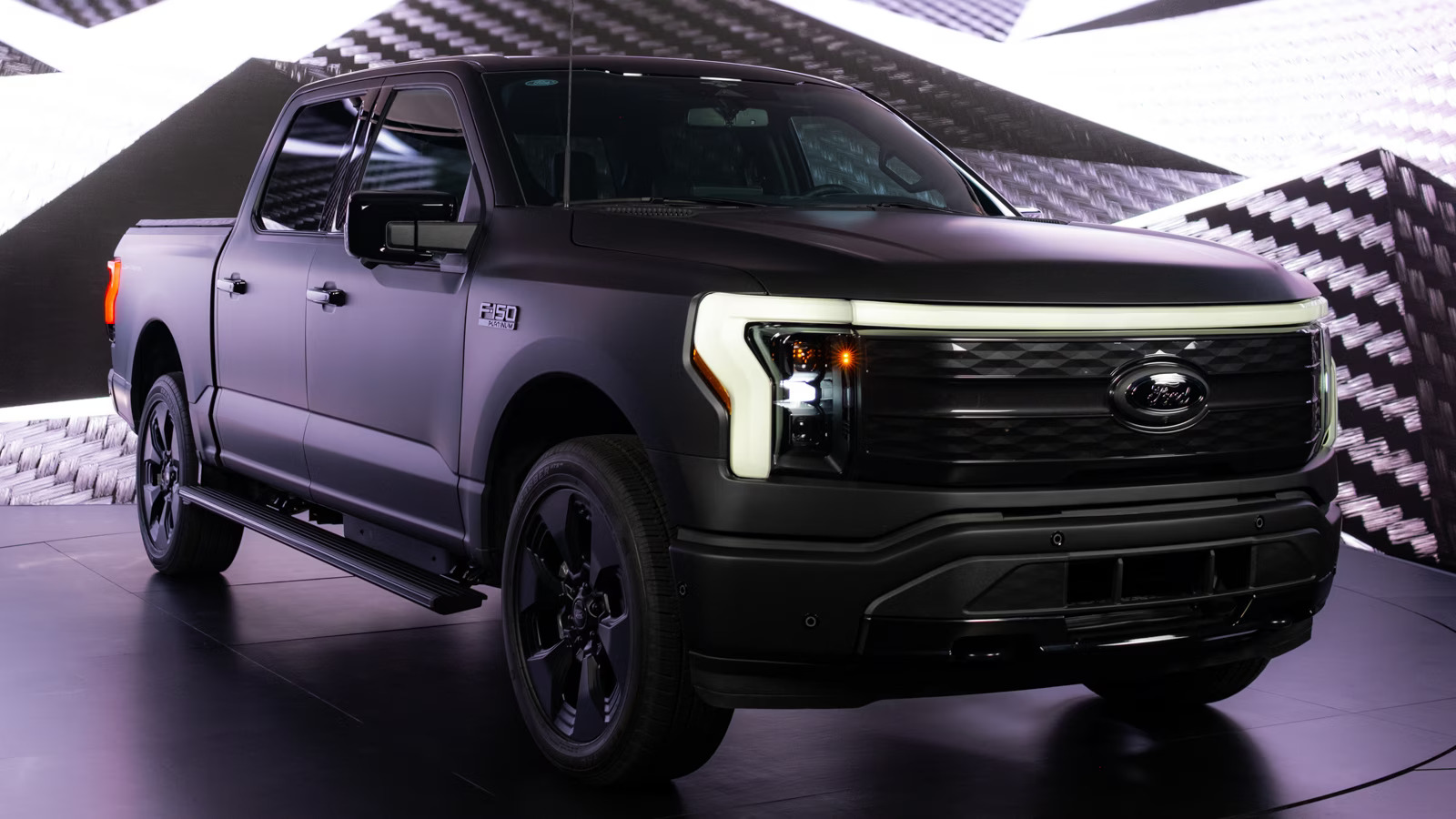
For 2025, Ford has introduced expanded battery options and trim levels while adding new technology features like BlueCruise hands-free highway driving. The Pro model targets fleet and commercial buyers with a starting price of around $55,000, while well-equipped Platinum models approach $95,000.
The Lightning’s blend of familiar F-150 capability with electric-specific innovations demonstrates Ford’s approach to electric transition evolving their iconic truck for the battery age rather than reinventing it. Its success in converting traditional truck buyers to electric will be a key indicator of the broader market’s readiness for electrification.
3. Rivian R1T
The Rivian R1T established itself as the first purpose-built electric pickup to reach meaningful production volumes, creating a new category of adventure-focused electric trucks.
Though deliveries began in 2021, Rivian continues to enhance the R1T with new battery options, motors, and features that keep it at the forefront of electric truck innovation.
Unlike the work-focused approach of traditional truck makers, Rivian designed the R1T specifically for outdoor enthusiasts and adventure seekers.
The midsize truck features a quad-motor architecture that delivers precise torque vectoring to each wheel independently, creating unmatched off-road capability.
With up to 835 horsepower and 908 lb-ft of torque in Performance models, the R1T accelerates from 0-60 mph in as little as 3.0 seconds while maintaining impressive off-road credentials with adjustable air suspension offering up to 14.9 inches of ground clearance.
Rivian now offers three battery pack options Standard (270+ miles), Large (328 miles), and Max (410+ miles) along with dual-motor and quad-motor powertrain configurations.

The R1T’s 11,000-pound towing capacity matches larger trucks, though the range decreases substantially when towing heavy loads. The R1T’s most distinctive feature is the Gear Tunnel a unique 65-inch-wide storage compartment that runs behind the cab and in front of the bed, accessible from both sides of the vehicle.
This space accommodates Rivian’s optional Camp Kitchen and other accessories. Additional innovations include an air compressor for inflating tires or equipment, a removable Bluetooth speaker, and a unique flashlight integrated into the driver’s door.
Inside, the R1T presents a premium, sustainable aesthetic with vegan leather options and reclaimed wood trim. The minimalist interior features a 16-inch touchscreen running Rivian’s intuitive software platform, which includes off-road driving modes and adventure-focused navigation.
Starting around $69,900 for dual-motor models with the Standard battery pack, the R1T positions itself as a premium lifestyle vehicle rather than a traditional work truck.
Its continued refinement and expanding ecosystem of accessories demonstrate Rivian’s commitment to creating vehicles specifically designed for outdoor adventure an electric truck that doesn’t merely replace an ICE truck but offers capabilities and features traditional pickups can’t match.
4. Chevrolet Silverado EV
The Chevrolet Silverado EV represents General Motors’ major push into the full-size electric pickup market using its advanced Ultium platform.
Unlike Ford’s approach with the Lightning, Chevrolet designed the Silverado EV from the ground up as an electric vehicle rather than adapting an existing truck architecture. This clean-sheet design enables innovations that wouldn’t be possible with a converted ICE vehicle.
The Silverado EV’s most striking feature is its structural design which maximizes interior space and functionality. The absence of a traditional engine allowed Chevrolet to include a spacious frunk while creating a more aerodynamic profile than conventional trucks.
The “eTrunk” provides weatherproof, lockable storage that complements the innovative Multi-Flex Midgate, which allows the wall between the cab and bed to fold down, extending the bed length from 5’11” to nearly 11 feet while still accommodating passengers in the second row.
Powertrain options include dual-motor configurations delivering up to 754 horsepower and 785 lb-ft of torque in the RST First Edition, enabling 0-60 mph acceleration in approximately 4.5 seconds.
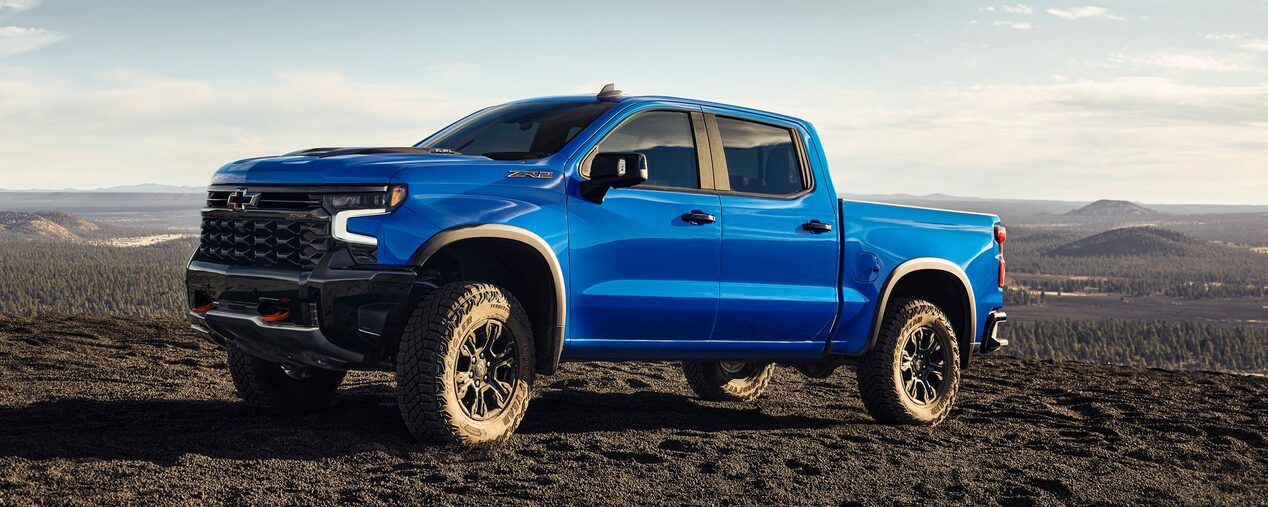
Chevrolet promises up to 450 miles of range with the largest battery option, positioning the Silverado EV at the top of the class for range. Towing capacity reaches 10,000 pounds, with future variants promised to deliver up to 20,000 pounds.
The PowerBase charging system provides 10.2kW of exportable power through ten outlets, including a 240V outlet in the bed and another in the eTrunk.
This power can run tools, appliances, or other electric vehicles. Available four-wheel steering enhances maneuverability, while adaptive air suspension can raise or lower the truck by nearly 2 inches.
Chevrolet is deploying a staged rollout strategy, beginning with the Work Truck (WT) model aimed at commercial customers, followed by the premium RST First Edition.
Additional trim levels will follow, with starting prices projected from approximately $50,000 for base models to over $100,000 for fully equipped versions.
The Silverado EV’s blend of innovative features, impressive range, and commercial-focused variants demonstrates GM’s comprehensive approach to electrifying its flagship truck lineup.
Its success will be critical to GM’s broader electric vehicle strategy and its ability to convince traditional truck buyers to make the transition to electric power.
Also Read: 12 Vehicles Offering Bespoke Design Options in 2025
5. GMC Hummer EV Pickup
The GMC Hummer EV Pickup reimagines the controversial Hummer brand as a showcase for the most extreme capabilities possible in an electric truck.
Though initial deliveries began in 2021, GMC continues to expand the lineup with new variants and features. Unlike most electric vehicles that emphasize efficiency, the Hummer EV embraces excess in power, size, features, and price creating what GMC calls the world’s first “super truck.”
The flagship Edition 1 model delivers astonishing performance from its tri-motor powertrain: 1,000 horsepower, 1,200 lb-ft of torque, and 0-60 mph acceleration in approximately 3 seconds using the dramatic “Watts to Freedom” launch mode.
This performance comes from a massive 205 kWh battery pack roughly twice the size of most electric vehicle batteries providing an estimated 329 miles of range despite the vehicle’s enormous curb weight of over 9,000 pounds. Lower-priced dual-motor variants with reduced range specifications are now entering production.
The Hummer EV’s most innovative feature is its “CrabWalk” mode, which utilizes four-wheel steering to allow the truck to move diagonally at low speeds useful for going through tight off-road situations or simply as a party trick.
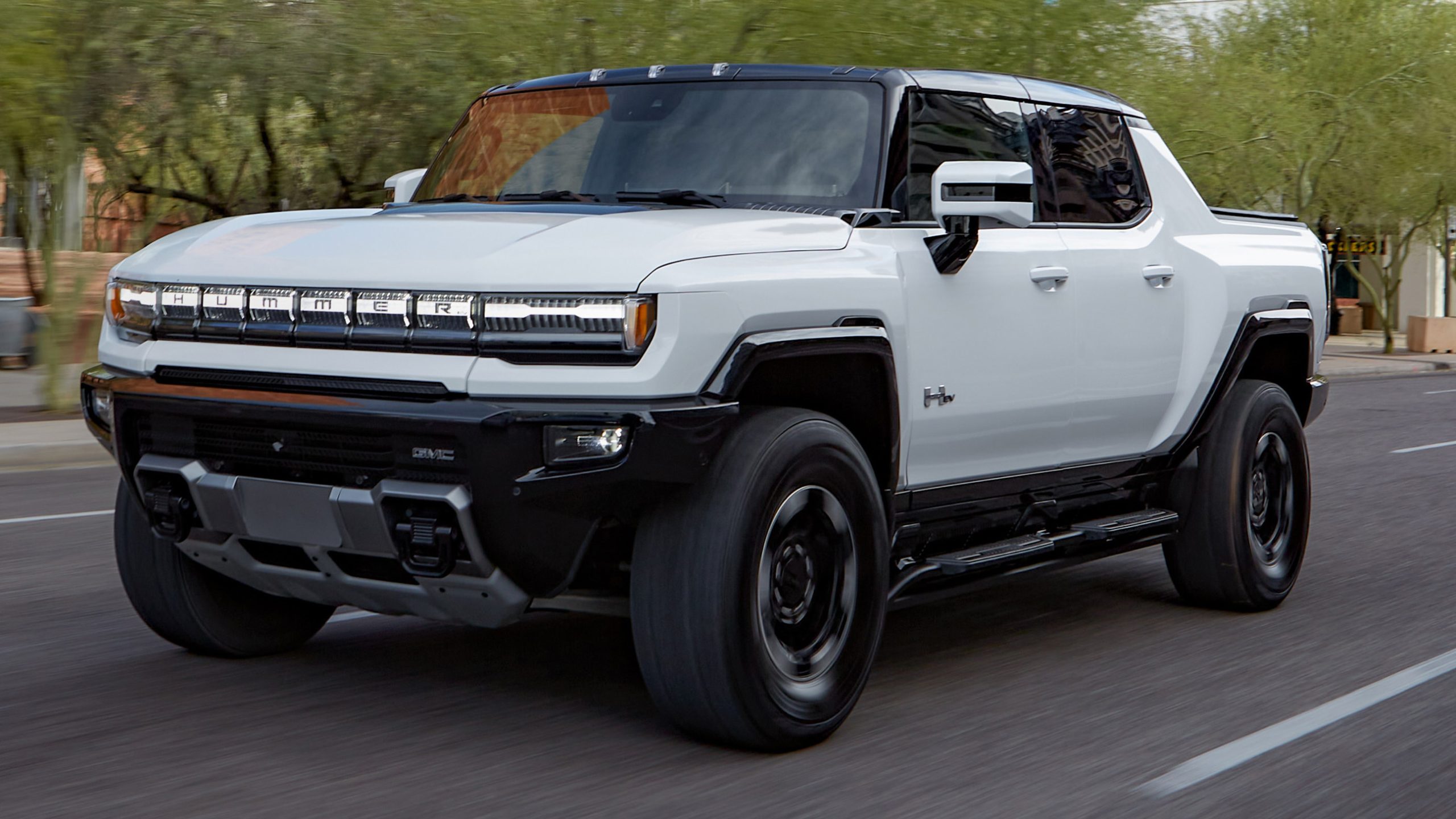
The available Extract Mode raises the adaptive air suspension to provide 15.9 inches of ground clearance for extreme off-roading. The UltraVision system utilizes 18 cameras, including underbody views, to go through the difficult terrain.
Inside, the Hummer features a 13.4-inch infotainment display and a 12.3-inch digital instrument cluster running Epic Games’ Unreal Engine for stunning graphics.
The Infinity Roof system includes removable transparent sky panels that are stored in the front trunk, creating an open-air experience.
With prices ranging from approximately $87,000 for the base EV2 model to over $110,000 for the Edition 1, the Hummer EV targets affluent buyers seeking the most extreme electric truck experience available.
Its unapologetic approach to size, power, and capability makes it less of a practical work vehicle than a status symbol showcasing the performance potential of electric powertrains.
The Hummer EV’s significance extends beyond its sales volume; it demonstrates how electric power can transform even the most excessive gas-guzzling brands into something revolutionary, albeit still excessive in a different way. Its technological innovations will likely influence more mainstream GM electric vehicles in the future.
6. Ram 1500 REV
The Ram 1500 REV represents Stellantis’ carefully considered entry into the electric truck market. While competitors rushed to be first, Ram took a more deliberate approach, studying customer needs and technological possibilities before revealing its solution.
Scheduled to begin production in late 2024, the Ram 1500 REV aims to address the key concerns that have made traditional truck buyers hesitant about electrification.
Ram’s approach combines familiar truck styling with subtle aerodynamic enhancements, making the REV immediately recognizable as part of the Ram family while incorporating necessary EV design elements.
Unlike some competitors that eliminated the traditional framed chassis, Ram is utilizing a body-on-frame design adapted specifically for electrification, maintaining familiar truck-like characteristics while accommodating the battery pack between the rails.
The Ram 1500 REV will offer two battery options: a standard 168 kWh pack providing approximately 350 miles of range and a larger 229 kWh “Range Extended” pack targeting up to 500 miles potentially the longest range of any electric truck announced to date.
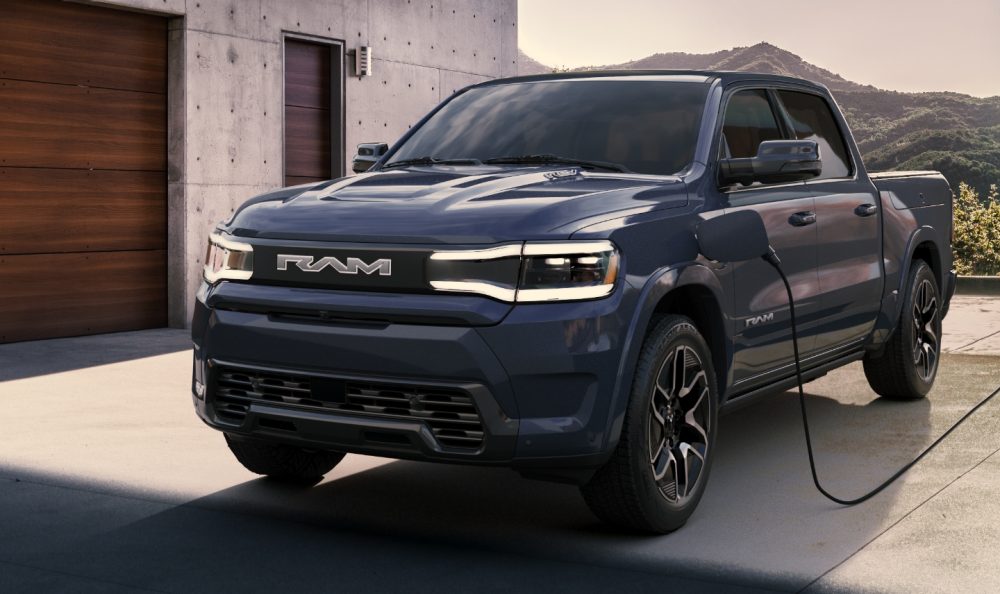
The dual-motor powertrain will deliver 654 horsepower and 620 lb-ft of torque, enabling 0-60 mph acceleration in approximately 4.4 seconds. Ram promises 14,000 pounds of maximum towing capacity and a 2,700-pound payload rating, positioning the REV at the top of the electric truck capability spectrum.
Innovative features include a frunk with a powered opening, a multifunction tailgate with barn-door opening capability, and an optional range extender system for the most demanding towing scenarios.
The interior showcases Ram’s premium approach with a 14.5-inch central touchscreen and 12.3-inch digital instrument cluster, an available 23-speaker Klipsch audio system, and premium materials throughout.
Ram has announced plans for a complete portfolio of electrified solutions, including a mid-2025 introduction of a range-extended electric truck (REEV) featuring an onboard generator to address range anxiety concerns.
This dual approach demonstrates Ram’s understanding that different customers may require different solutions during the transition to full electrification.
With a starting price expected around $58,000 and fully loaded models approaching $100,000, the Ram 1500 REV positions itself competitively within the emerging electric truck segment.
Its later entry into the market allows Ram to learn from competitors’ experiences while potentially leapfrogging them in key areas like range and capability.
7. Canoo Pickup Truck
The Canoo Pickup Truck represents perhaps the most radical rethinking of what a pickup truck can be in the electric era. This compact but highly functional truck from California-based startup Canoo is scheduled to begin production in 2025 after several delays and financial challenges.
Rather than adapting traditional truck design for electrification, Canoo started with a clean sheet focused on maximizing utility within a small footprint.
Built on Canoo’s proprietary “skateboard” platform, the pickup truck features a cab-forward design that places the driver almost directly above the front wheels, eliminating the traditional hood and maximizing interior and cargo space within a vehicle just 184 inches long significantly shorter than conventional midsize trucks.
Despite its compact dimensions, the truck offers a 6-foot bed that can extend to 8 feet with the tailgate down. The truck’s most innovative features are its modular cargo solutions.
The front cargo area features a fold-down worktable with power outlets and storage compartments. The sides of the bed include flip-down tables that double as workspaces, while a modular divider system allows for customizable bed configurations.
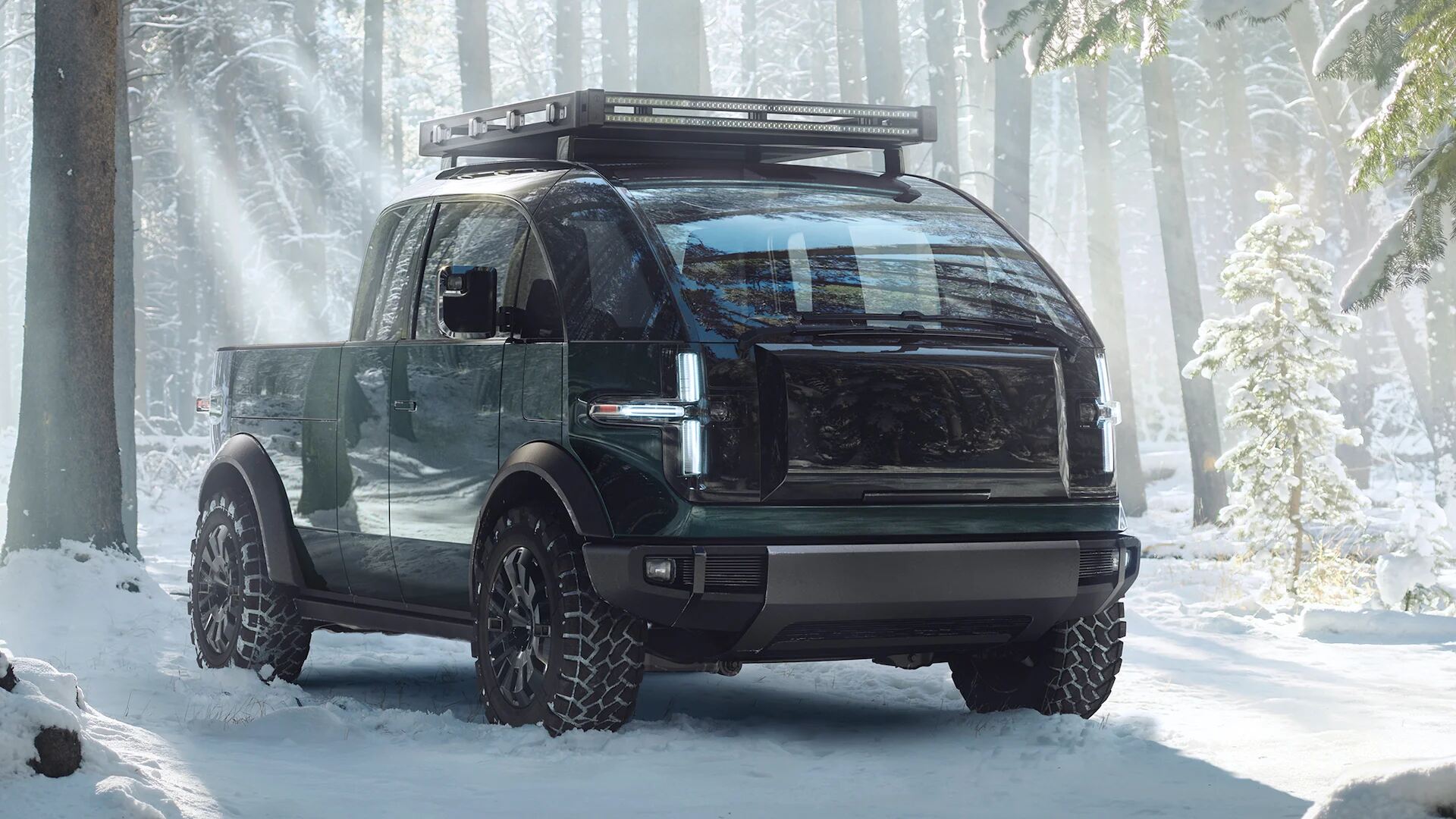
A pull-out bed extension increases cargo capacity without increasing the vehicle’s footprint. Canoo hasn’t released complete specifications but has indicated the pickup will offer up to 600 horsepower in dual-motor configuration, with an estimated range of 200+ miles.
The truck targets a payload capacity of 1,800 pounds impressive for its size though towing capacity is expected to be more modest than full-size competitors.
Inside, Canoo continues its minimalist approach with a spartan dashboard featuring a digital instrument cluster and few physical controls.
The spacious cabin utilizes a bench-style front seat with room for three passengers, made possible by the cab-forward design and steer-by-wire system that eliminates the traditional steering column.
Canoo faces significant challenges in bringing the pickup to production, including securing manufacturing capacity and additional funding.
The company recently announced a partnership with key suppliers and continues to secure government contracts for other vehicle variants, potentially providing the stability needed to launch the pickup.
Expected to start around $35,000, the Canoo Pickup Truck would be among the most affordable electric trucks announced to date. Its unique approach prioritizes functionality and efficiency over traditional truck capabilities like towing, potentially appealing to urban and suburban users who need occasional truck utility without the bulk and expense of conventional pickups.
8. Lordstown Endurance
The Lordstown Endurance represents one of the most turbulent journeys in the electric truck space a story of ambitious promises, financial struggles, bankruptcy, and potential resurrection.
While limited production began in 2022, the company subsequently filed for bankruptcy and was acquired by Foxconn. Recent announcements suggest a renewed effort to bring an updated version of the Endurance to market by 2025, focusing primarily on commercial fleet customers.
What distinguishes Endurance from other electric trucks is its unique hub motor technology, with four independent electric motors located in each wheel hub rather than mounted on the axles.
This design eliminates the need for drive shafts, differentials, and many other traditional powertrain components, potentially reducing maintenance requirements a key selling point for fleet operators concerned about vehicle downtime.
The original Endurance specifications included a total output of 550 horsepower, an estimated range of 200+ miles, and a top speed limited to 80 mph to maximize efficiency.
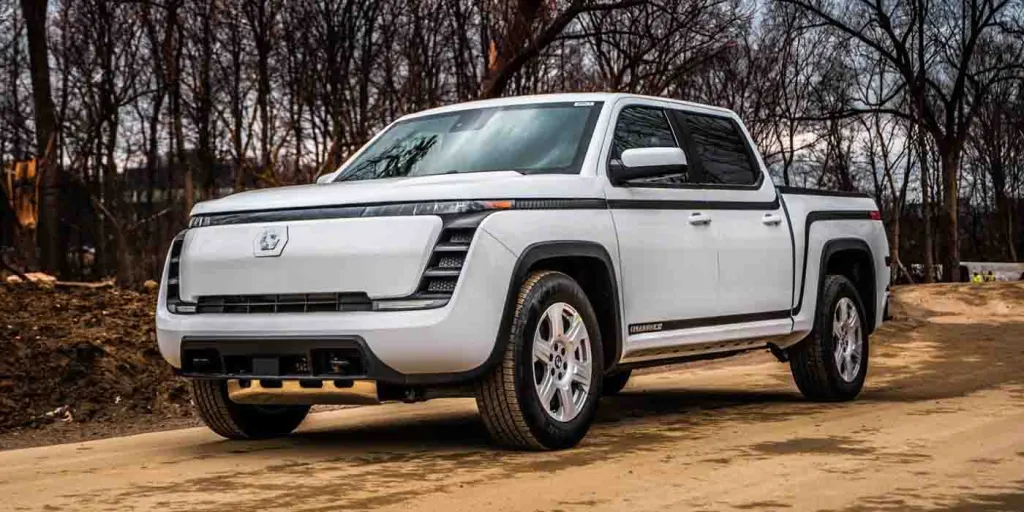
The truck was designed with a payload capacity of 3,000 pounds and a towing capability of 7,500 pounds respectable figures for a vehicle targeting work applications rather than recreational use.
Lordstown designed the Endurance with fleet customers in mind, focusing on reasonable acquisition costs and reduced total cost of ownership rather than luxury features or cutting-edge technology.
The interior reflected this philosophy with durable, utilitarian materials and straightforward controls. The conventional pickup design maintained familiar functionality while incorporating necessary modifications for the electric powertrain.
Under Foxconn’s ownership, the revived Endurance is expected to benefit from the manufacturing giant’s supply chain expertise and financial resources.
The updated truck will likely feature improved battery technology and range specifications while maintaining the focus on commercial applications.
If successful, Endurance could carve out a niche in the fleet market by offering a purpose-built electric work truck at a competitive price point, estimated at around $65,000 before incentives.
Its unique hub motor technology remains its most distinctive feature, though this unconventional approach must prove its durability and reliability in demanding work environments.
The Endurance’s journey illustrates both the opportunities and challenges facing new entrants in the automotive industry. While established manufacturers can leverage existing expertise and resources, startups must go through the complex manufacturing challenges, regulatory requirements, and capital needs making successful execution as important as innovative technology.
9. Toyota Electric Tacoma
Toyota’s upcoming electric Tacoma represents the cautious approach of a manufacturing giant known for methodical planning rather than rushed innovation.
Though Toyota has been criticized for its slow adoption of battery electric vehicles, the company’s strategic late entry into the electric truck segment may prove advantageous, allowing it to learn from competitors’ mistakes while leveraging its unmatched truck manufacturing expertise and customer loyalty.
While Toyota has not officially confirmed the name or all specifications of its electric midsize pickup, industry analysts expect it will be based on the Tacoma America’s best-selling midsize truck for 18 consecutive years.
Design patents and concept vehicles suggest Toyota will maintain familiar Tacoma styling cues while incorporating necessary aerodynamic improvements and distinctive EV design elements.
The truck will utilize Toyota’s dedicated e-TNGA electric vehicle platform, modified to provide the capability Tacoma customers expect. Toyota’s approach to electric trucks emphasizes real-world practicality over headline-grabbing specifications.
Expected performance includes dual-motor all-wheel drive with approximately 400 horsepower, 0-60 mph acceleration in the 6-second range, and an estimated range of 250-300 miles.
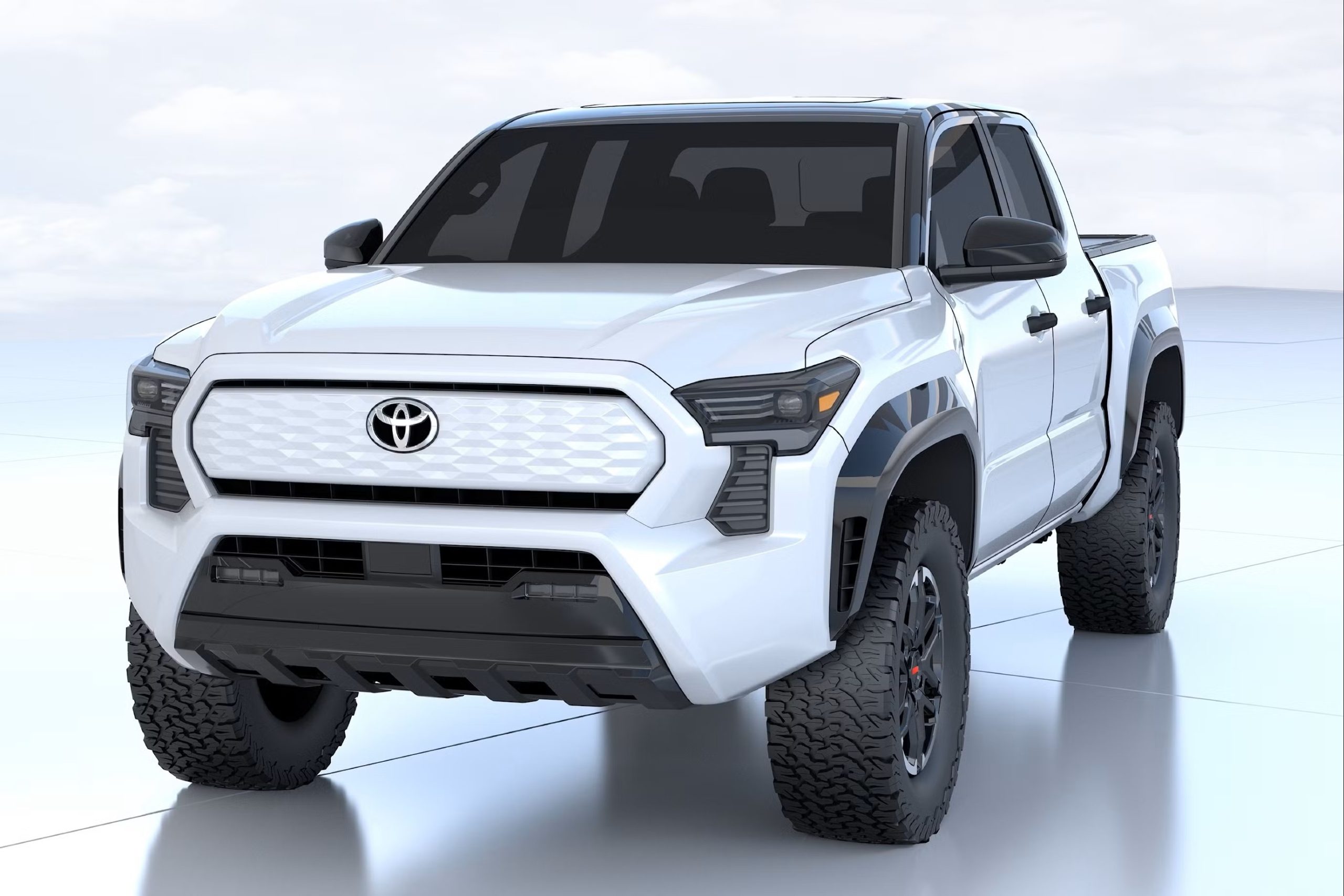
While these figures don’t match the extreme capabilities of some competitors, they likely represent a balanced approach that prioritizes reliability, efficiency, and affordability as hallmarks of Toyota’s philosophy.
The electric Tacoma is expected to maintain or improve upon the current model’s 6,800-pound towing capacity and 1,685-pound payload rating.
Toyota’s extensive off-road experience will translate to electric-specific terrain management systems, likely building on the technology developed for the hybrid and eventual electric Land Cruiser models.
Inside, Toyota is expected to blend traditional truck functionality with modern technology, including an enhanced version of its latest infotainment system with cloud-connected features specific to electric vehicle operation.
The interior will likely maintain physical controls for key functions while adding EV-specific displays and interfaces. Toyota’s extensive dealer network and reputation for reliability could give its electric truck significant advantages in markets underserved by newer manufacturers.
The company’s measured approach includes developing solid-state battery technology that could eventually provide breakthrough improvements in range, charging speed, and battery longevity.
With an expected starting price of around $50,000 when it arrives in late 2025 or early 2026, the electric Tacoma will target the heart of the midsize truck market rather than the premium segments favored by early electric truck entries.
Toyota’s patient approach may ultimately prove wise if it delivers a truck that combines electric innovation with the proven durability that has made the Tacoma legendary.
10. Kia Pickup Truck
Kia’s upcoming electric pickup truck represents the Korean manufacturer’s bold expansion into new territory as part of its comprehensive “Plan S” electrification strategy.
Though Kia has no history in the pickup segment in North America, its planned entry leverages the company’s aggressive electric vehicle development program and willingness to challenge established categories with fresh perspectives.
Expected to arrive in 2026, Kia’s truck could redefine expectations for affordable electric pickups. While official details remain limited, Kia has confirmed the development of an electric pickup as part of its plan to launch at least two dedicated electric trucks by 2027.
Unlike traditional truck manufacturers constrained by legacy expectations, Kia has the freedom to reimagine what a pickup can be when designed specifically for electrification.
Early indications suggest the truck will utilize Kia’s advanced E-GMP (Electric-Global Modular Platform) that underpins vehicles like the EV6, but modified with truck-specific requirements.
The Kia pickup is expected to target the midsize segment with a dual-motor powertrain delivering approximately 350-400 horsepower.

The E-GMP platform’s 800-volt electrical architecture enables ultra-fast charging capabilities, with the ability to charge from 10% to 80% in approximately 18 minutes at compatible stations. The range is projected to exceed 300 miles, competitive with established electric truck offerings.
Kia’s approach will likely prioritize versatility and technology over extreme capabilities, targeting urban and suburban users who need occasional utility rather than heavy-duty work performance.
Expected features include vehicle-to-load power export capabilities, flexible storage solutions, and advanced driver assistance systems derived from Kia’s current electric lineup.
The interior will likely showcase Kia’s increasingly premium approach to design and materials, with a panoramic display combining digital instruments and infotainment functions.
Connectivity features will include over-the-air updates and integration with Kia’s growing ecosystem of electric vehicle services. Perhaps most significantly, Kia’s manufacturing efficiency and aggressive pricing strategy could make its electric pickup substantially more affordable than current offerings, with an expected starting price of around $40,000 before incentives.
This would position it as one of the most accessible electric trucks on the market, potentially bringing electric pickup capability to a much broader audience.
Kia’s unexpected entry into the electric truck segment demonstrates how electrification is reshaping traditional market boundaries.
Without the constraints of existing truck platforms or customer expectations, Kia has the opportunity to create a pickup that emphasizes the unique advantages of electric architecture rather than merely replicating conventional truck capabilities with a battery powertrain.
Also Read: 10 Supercars That Have the Best Insurance Deals for Collectors

